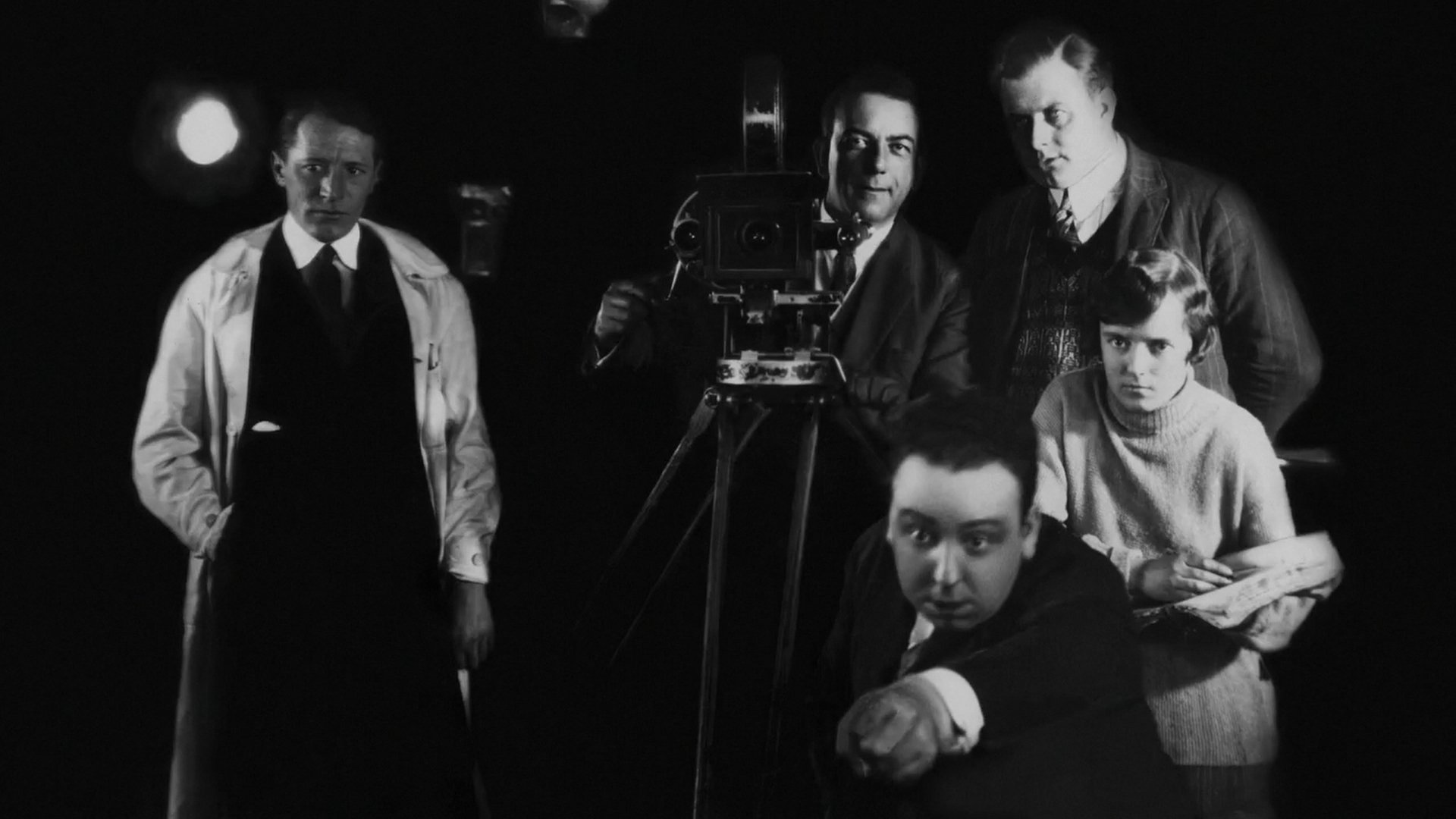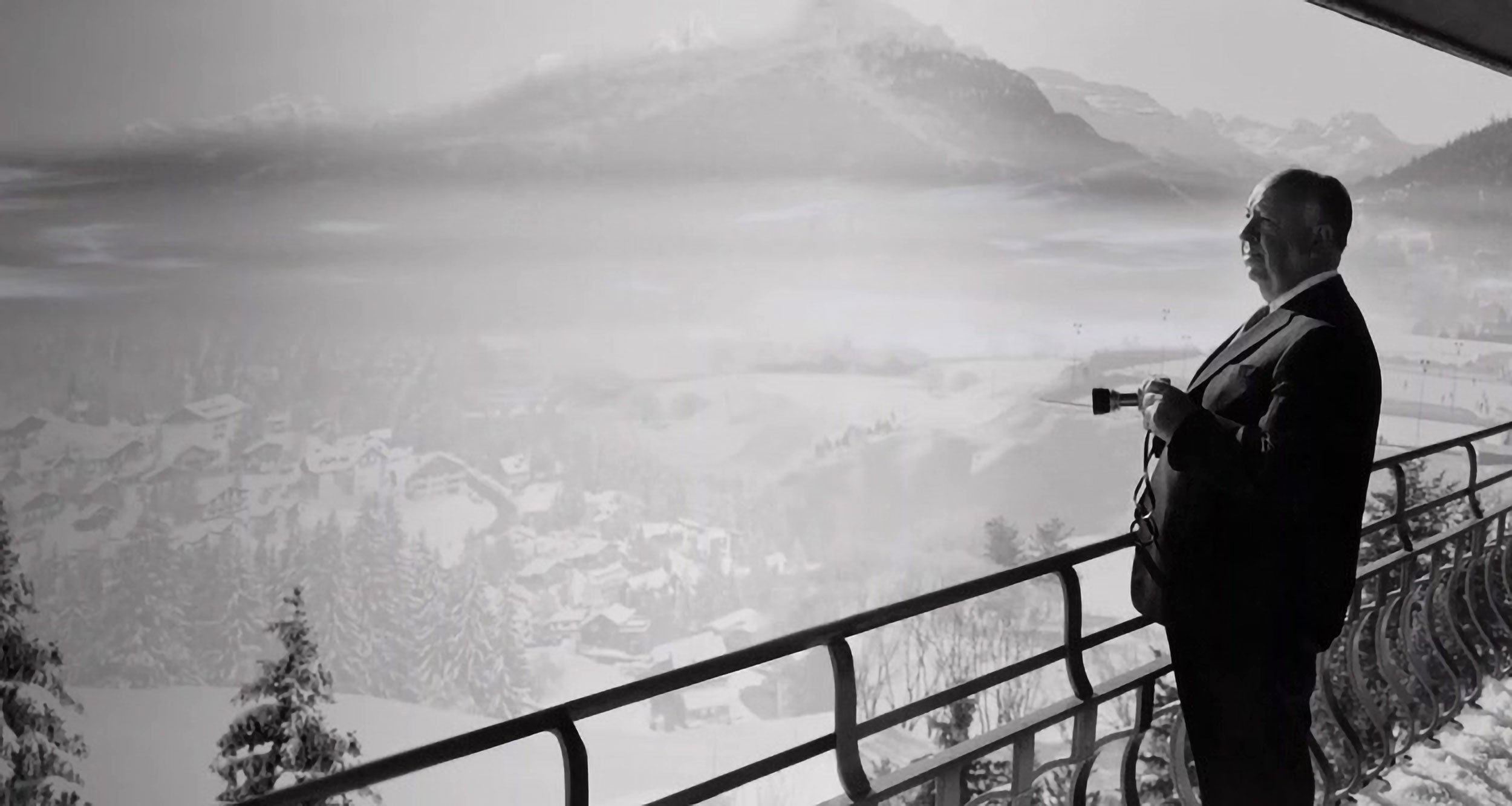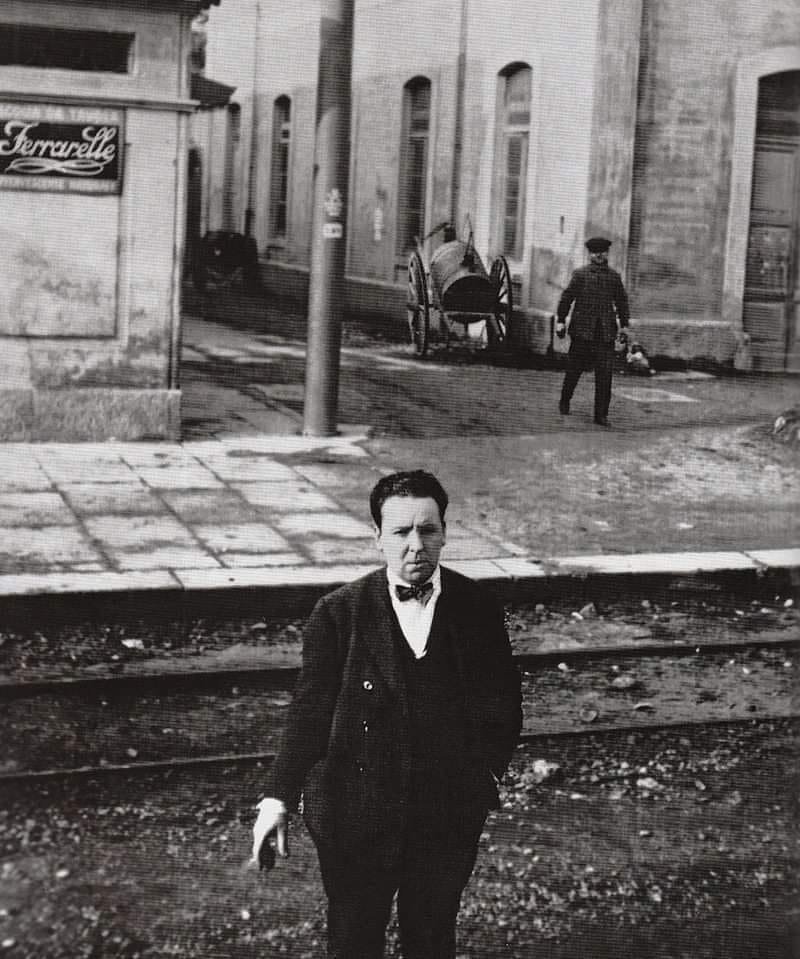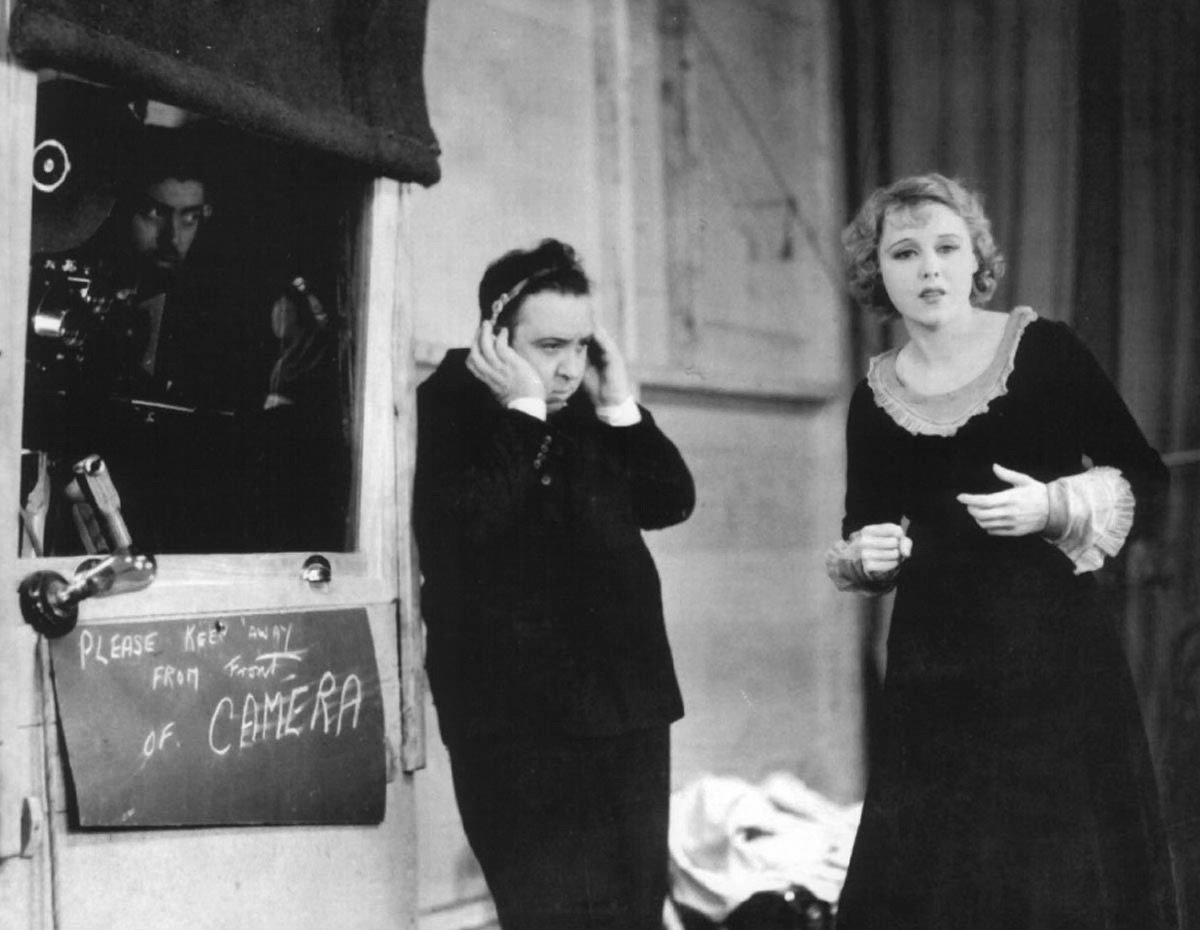
Alfred Hitchcock was born in Leytonstone, England on August 13, 1899. He was the youngest of three children born to William and Emma Jane Hitchcock.
After attending a technical school at 15, Hitchcock spent the first years of his career as a draftsman, advertising designer, and writer. An interest in photography led to him working in London's film industry, first as a title card designer for silent movies and, just five years later, as a director.
In 1926, Hitchcock married his assistant director, Alma Reville, and in 1928 they had a daughter, Patricia.

Hitchcock quickly gained notoriety as a director who delivered suspense, twist endings, and dark subject matter. His own personality and gallows humor were embedded in popular culture through interviews, film trailers, and cameo appearances in his own films. He was popular with audiences at home and abroad, and in 1939 the Hitchcock family moved to Hollywood. In the three decades that followed he would cement his legacy by directing and producing his most successful and enduring works. His television anthology, Alfred Hitchcock Presents, ran from 1955 to 1965 and made him a household name.

During his career, he created over fifty feature films in a career that saw not only the development of Hitchcock's own distinctive directorial style, but also landmark innovations in cinema. In 1929, Blackmail was his first feature film with sound and in 1948, his first colour film was Rope. Hitchcock himself has been credited with pioneering many camera and editing techniques for peers and aspiring directors to emulate.
Hitchcock collected many professional accolades including two Golden Globes, eight Laurel Awards, and five lifetime achievement awards. He was a five-time Academy Award nominee for Best Director and in 1940, his film Rebecca won the Oscar for Best Picture. In 1980, he received a knighthood from Queen Elizabeth II.
A husband, father, director, and the Master of Suspense, Sir Alfred Hitchcock passed away on April 29, 1980.
Timeline
Alfred Hitchcock completed over sixty films in a career spanning six decades. His work is full of iconic and unforgettable scenes so firmly embedded in popular culture that everyday things like birds, trains, and shower curtains can conjure them.
-

Early Life (August 13, 1899)
Born in Leytonstone, Essex, England, Alfred Hitchcock enters the world in a family of modest means. His early environment, steeped in the rigors of Jesuit education, would later infuse his cinematic works with a unique blend of suspense and moral complexity.
-

Entry into the World of Film (1920)
Hitchcock embarks on his illustrious career in the film industry at Famous Players-Lasky studio, where he starts at the age of 20 y designing title cards and quickly absorbs the mechanics of filmmaking.
-

Alma Reville: Partner in Life and Art (1923)
Works with Alma Reville on "Number 13," an unfinished project that initiates their lifelong professional collaboration and personal relationship.
-

Directorial Debut: "The Pleasure Garden" (1925)
Hitchcock directs his first feature film, "The Pleasure Garden," leveraging European cinematic techniques that would later distinguish his unique style.
-

Psychological Intrigue in "The Lodger" (1927)
With "The Lodger: A Story of the London Fog," Hitchcock introduces audiences to psychological complexity and atmospheric suspense, elements that become hallmarks of his career.
-

Marriage to Alma Reville (December 2, 1926)
Marries Alma Reville, his collaborator and confidant, whose influence is pivotal in his career.
-

Welcoming Patricia Hitchcock (July 7, 1928)
The birth of their daughter, Patricia, adds a new dimension to Hitchcock’s personal life, enriching his world beyond the camera.
-

Rise as Britain's Cinematic Pioneer (1927-1934)
Hitchcock's journey through British cinema reaches new heights as he directs "Blackmail" in 1929, heralded as the first British sound film. This period from "Downhill" to "Waltzes from Vienna" showcases his versatility and innovation in the evolving film industry.
-

Establishing a Legacy in British Film (1934-1939)
From "The Man Who Knew Too Much" to "Jamaica Inn," Hitchcock cements his status as a luminary of British cinema, crafting films that captivate audiences with their psychological depth and suspenseful narratives.
-

Breakthrough with "The Man Who Knew Too Much" (1934)
With the release of "The Man Who Knew Too Much," Hitchcock introduces a new depth to the thriller genre. This film not only showcases his knack for tension and drama but also sets a standard for his future works, blending international intrigue with tightly paced storytelling.
-

Master of Suspense with "The 39 Steps" (1935)
"The 39 Steps" marks a pivotal moment in Hitchcock's career, establishing him as a master of suspense. This film, along with "The Lady Vanishes" (1938), is celebrated as one of the greatest British films of the 20th century, praised for its innovative narrative techniques and the introduction of what would become the quintessential Hitchcockian style.
-

Transition to Hollywood (1939)
By 1939, he had international recognition and producer David O. Selznick persuaded him to move to Hollywood. A string of successful films followed.
-

Academy Award for "Rebecca" (1940)
His American debut, "Rebecca," not only wins the Academy Award for Best Picture but also firmly establishes Hitchcock as a major director in Hollywood.
-

Complex Characters in "Suspicion" (1941)
“Suspicion” marked Hitchcock's first film as a producer and director. The film is the first of four in which Cary Grant was cast by Hitchcock, and it is one of the rare occasions that Grant plays a sinister character.
-

"Shadow of a Doubt" (1943)
His personal favorite, “Shadow of a Doubt,” explores the darker undercurrents of American life, creating a suspenseful and psychological family drama.
-

Wartime Projects (1944-45)
During World War II, Alfred Hitchcock actively supported the war effort, directing impactful films such as "Lifeboat," which portrayed human endurance in the face of adversity. In a significant 1945 project, he collaborated with British producer Sidney Bernstein to create a documentary about the recently liberated Nazi extermination camp Bergen-Belsen.
-

Collaboration with Salvador Dali (1945)
Works with Dali on the dream sequences for "Spellbound," merging surrealism with psychological thriller elements.
-

Intense Romance and Intrigue in "Notorious" (1946)
"Notorious" features complex narrative weaving and stellar performances by Cary Grant and Ingrid Bergman.
-

Transatlantic Interlude (1948-49)
From "Rope" to "Stage Fright," this period features experiments with continuous takes and complex narrative structures.
-

Innovative Cinematic Techniques in "Rear Window" (1954)
"Rear Window" breaks new ground in storytelling with its innovative use of perspective, making the audience voyeurs alongside its protagonist, played by James Stewart.
-

Television Debut: "Alfred Hitchcock Presents" (1955)
From 1955 to 1965, Hitchcock was the host of the television series Alfred Hitchcock Presents. With his droll delivery, gallows humour and iconic image, the series made Hitchcock a celebrity. The title-sequence of the show pictured a minimalist caricature of his profile (he drew it himself; it is composed of only nine strokes), which his real silhouette then filled.
-

Glamour and Suspense in "To Catch a Thief" (1955)
His third Grace Kelly film, “To Catch a Thief,” combines star power with picturesque settings, crafting a visually stunning and engaging thriller.
-

Exploring Obsession in "Vertigo" (1958)
"Vertigo" delves into the depths of obsession and identity, featuring a complex narrative and groundbreaking cinematography that have earned it a place among the greatest films of all time.
-

"North by Northwest" (1959)
During pre-production of North by Northwest (1959), which was a "slow" and "agonising" process, his wife Alma was diagnosed with cancer. While she was in hospital, Hitchcock kept himself occupied with his television work and would visit her every day. Alma underwent surgery and made a full recovery,
-

Changing the Face of Horror with "Psycho" (1960)
"Psycho" revolutionizes the horror genre, with its iconic scenes and score influencing countless films and filmmakers.
-

Truffaut Interviews (1962)
On 13 August 1962, Hitchcock's 63rd birthday, the French director François Truffaut began a 50-hour interview of Hitchcock, filmed over eight days at Universal Studios, during which Hitchcock agreed to answer 500 questions.
-

Avian Terror in "The Birds" (1963)
"The Birds" is another showcase of Hitchcock’s flair for suspense and technical innovation, with its pioneering special effects creating a lasting impact on the horror genre.
-

A Legacy Cemented: Thalberg Award (1966)
The Irving G. Thalberg Memorial Award is bestowed upon Hitchcock, celebrating his lifelong contributions to cinema.
-

Family Plot (1972)
"Family Plot" marks Alfred Hitchcock's final film, showcasing his undiminished knack for blending suspense with humor.
-

Life Achievement Award (1973)
Receives the AFI Life Achievement Award, honoring his profound impact on filmmaking.
-

Alfred Hitchcock's Passing (April 29, 1980)
Alfred Hitchcock, the seminal figure in the art of suspense cinema, passes away in Bel Air, Los Angeles, California. His death marks the end of an era in filmmaking, leaving behind a legacy that has profoundly influenced the craft and narrative of cinematic storytelling.






























